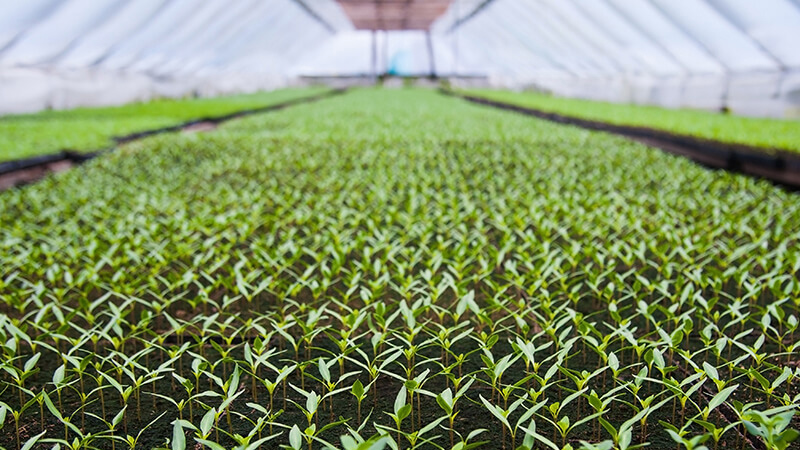Ways the Offshore Greenhouse Certification Program Will Benefit the Entire Horticulture Industry
 USDA’s Animal and Plant Health Inspection Service (APHIS) Offshore Greenhouse Certification Program for unrooted cuttings has officially moved from a pilot project to an official program. APHIS is now inviting greenhouse facilities located outside the U.S. to participate in the program, and those facilities that are accepted will agree to produce generally admissible unrooted plant cuttings under a systems approach to reduce pest and disease risks. In turn, shipments produced and exported under this program may receive fewer or less frequent inspections at U.S. plant inspection stations, helping to expedite clearance and entry.
USDA’s Animal and Plant Health Inspection Service (APHIS) Offshore Greenhouse Certification Program for unrooted cuttings has officially moved from a pilot project to an official program. APHIS is now inviting greenhouse facilities located outside the U.S. to participate in the program, and those facilities that are accepted will agree to produce generally admissible unrooted plant cuttings under a systems approach to reduce pest and disease risks. In turn, shipments produced and exported under this program may receive fewer or less frequent inspections at U.S. plant inspection stations, helping to expedite clearance and entry.
Interested facilities must meet the program’s minimum standards for greenhouse construction, security, production and sanitation, pest management, training, and recordkeeping described in the Offshore Greenhouse Certification Program Framework. APHIS officials will physically visit and certify each facility before it can participate in the program. APHIS will schedule these onsite visits starting in November 2020.
Greenhouse Grower recently connected with Craig Regelbrugge, Senior Vice President, Advocacy and Research at AmericanHort, to learn more about how the entire floriculture industry stands to benefit from this program.
Greenhouse Grower (GG): How did this program progress from a pilot to an official program?
Regelbrugge: The technical work mostly took place during 2017. We had a working group that involved AmericanHort and four primary companies: Ball Horticultural Company, Dümmen Orange, Syngenta, and Proven Winners. Representatives from each of those companies participated in a technical working group that helped negotiate the contours of the program. It was then piloted over a couple years, and the kinks were worked out. Now it becomes a standing program that is available to any company exporting unrooted cuttings (those defined as admissible plants) to the U.S. There are exceptions, but the general rule is most plants are admissible. While the pilot focused on just the four companies and their production facilities in six Latin American countries, the standing program would be open to other parts of the world. There are a handful of African countries, for example, that have become important players, as well as Europe and the Middle East.
GG: What are the goals of the program?
Regelbrugge: The carrot out there for companies to participate has always been about expediting the supply chain. Traditionally, all plants coming into the U.S. must go through a plant inspection station that’s run by USDA. They arrive at an airport and get transferred over to the inspection station that is sometimes on airport property, sometimes not. Then they get queued up and go through an inspection process. As we know, there are huge peaks and valleys in the commercial activity, and in general, the peak shipping time starts in December and runs through March. There’s a giant spike during this time, and there’s a smaller bump during the poinsettia cutting season.
The main goal is reduced frequency of inspection, not intensity of inspection, and there’s a big distinction between the two. Intensity of inspection means looking at every consignment, but fewer plants or fewer bags of cuttings in the consignment. Reduced frequency of inspection means we’re going to look at fewer consignments, and this is what we wanted.
GG: What does this announcement mean for a typical grower here in the U.S.?
Regelbrugge: There’s a huge chunk of the supply chain fed by unrooted cuttings from offshore. Some of those cuttings end up going to specialized rooting stations, while some go directly to finish growers that do the rooting themselves. In either case, it simply means that consignments or cuttings are going to move through the transportation and logistics piece of the process more rapidly, with less risk of delay. When you’re dealing with a highly perishable crop, delays can mean quality loss or even failure.
It’s also going to mean better quality material. In the current COVID-19 context, people have complained about how disruptions in international travel have made it harder for them to get unrooted cuttings. This program isn’t going to overcome COVID-19-related disruptions, but it just goes to show that in the supply chain, when things don’t work well, domestic growers suffer. This program will create a more reliable supply chain.
GG: Is there anything else about the program you’d like to share?
Regelbrugge: I would just emphasize that the industry will benefit overall from better quality plant material. When a growing operation gets into a systems approach and must look holistically at how the facility is constructed and operated, how it does water management, growing media management, pest management, sanitation, and recordkeeping, that regulatory oversight tends to make the whole team more aware and more engaged in the process of making sure plant material is healthy and as pest free as possible. Beyond expediting the supply chain, there is a broader benefit to the industry. Good growers become better growers, they become more attuned to what can go wrong, and overall quality increases and incidents resulting from pest problems diminish.









